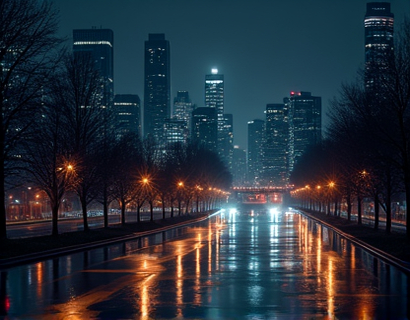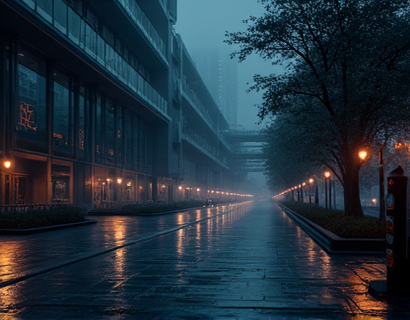Comprehensive Guide to the Cultural Heritage, Historical Sites, and Travel Insights of the Ancient Indus Valley
The Indus Valley, a cradle of one of the world's oldest civilizations, beckons history enthusiasts and travel lovers with its rich tapestry of cultural heritage and historical landmarks. Spanning across present-day Pakistan and northwestern India, this ancient region offers a profound journey into the past, revealing the sophistication and complexity of a civilization that thrived over 4,000 years ago. This guide aims to provide an in-depth exploration of the Indus Valley, highlighting its cultural significance, must-visit sites, and practical travel tips to ensure a memorable and enriching experience for all visitors.
Historical Background and Significance
The Indus Valley Civilization, also known as the Harappan Civilization, emerged around 3300 BCE and reached its peak between 2600 BCE and 1900 BCE. It is one of the three ancient civilizations of the Old World, alongside Mesopotamia and Ancient Egypt. The civilization was named after the city of Harappa, one of its major urban centers, which was discovered in the early 20th century. The Indus Valley Civilization is renowned for its advanced urban planning, sophisticated water management systems, and unique script, which remains undeciphered to this day.
The civilization's significance lies in its contributions to urban development, trade, and culture. The cities of Mohenjo-Daro and Harappa are prime examples of urban planning, featuring grid-like street layouts, advanced drainage systems, and public baths. The Indus people were skilled craftsmen, producing intricate pottery, jewelry, and seals. Their trade networks extended across the region, reaching as far as Mesopotamia and the Persian Gulf, indicating a high level of economic and cultural exchange.
Major Historical Sites to Visit
Visitors to the Indus Valley can explore several key historical sites that offer a glimpse into the lives of its ancient inhabitants. Each site provides unique insights and experiences, making them essential stops for anyone interested in this ancient civilization.
Mohenjo-Daro
Located in the province of Sindh, Pakistan, Mohenjo-Daro is one of the most significant and well-preserved cities of the Indus Valley Civilization. The site covers an area of about 300 acres and is divided into two main parts: the Citadel and the Lower Town. The Citadel features the Great Bath, a large public bathing structure, and the Pillared Hall, a mysterious structure with intricate stone pillars. The Lower Town showcases well-planned residential areas with sophisticated drainage and water supply systems. The site also includes a museum that houses numerous artifacts found during excavations.
Harappa
Situated in the Punjab province of Pakistan, Harappa is another major urban center of the Indus Valley Civilization. The site is known for its extensive ruins, including the Granary, a large storage building, and the Bath Complex, similar to the Great Bath in Mohenjo-Daro. Harappa also features a unique stone and brick platform, known as the Platform of the Priest-King, which depicts a figure seated on a throne, possibly a high-ranking official or priest. The site offers guided tours and a museum to enhance the visitor experience.
Kalibangan
Located in the Rajasthan province of India, Kalibangan is one of the lesser-known but equally important sites of the Indus Valley Civilization. This site is notable for its early evidence of urban planning, including a well-planned drainage system and a fire altars area. Kalibangan also features a unique "bath" structure, similar to those found in Mohenjo-Daro and Harappa. The site provides a lesser-visited but equally fascinating glimpse into the daily life and engineering skills of the Indus people.
Rakhigarhi
Rakhigarhi, also in Haryana, India, is one of the largest but least excavated sites of the Indus Valley Civilization. Recent excavations have revealed that it was once a major urban center, comparable to Mohenjo-Daro and Harappa. The site includes a citadel with a massive wall and a lower town with well-planned streets and drainage systems. Rakhigarhi offers a unique opportunity to see the civilization in its natural setting, away from the crowds of more famous sites.
Cultural Heritage and Daily Life
Beyond the archaeological sites, the cultural heritage of the Indus Valley Civilization is evident in the artifacts and artworks that have survived the test of time. These items provide a window into the daily life, beliefs, and artistic expressions of the people who lived here.
Indus Valley artifacts include intricate pottery, often decorated with geometric patterns and animal motifs. Beads made from various materials such as steatite, carnelian, and lapis lazuli indicate a sophisticated craft industry. Seals, often featuring animals like bulls, elephants, and unicorns, were used for trade and administrative purposes. The famous "Dancing Girl" figurine, made of bronze, showcases the artistic skill and attention to detail of Indus artisans.
The Indus people were deeply religious, as evidenced by the numerous religious artifacts and structures found at various sites. The presence of bathing facilities, both public and private, suggests a strong emphasis on cleanliness and ritual purity. The discovery of idols and figurines, some of which may represent deities, indicates a complex religious system, though the exact nature of their beliefs remains a subject of ongoing research.
Travel Insights and Practical Tips
Visiting the Indus Valley Civilization sites can be a rewarding experience, but proper planning and preparation are essential to make the most of your journey. Here are some practical tips to ensure a smooth and enriching visit.
First, the best time to visit the Indus Valley sites is from October to March, when the weather is pleasant and comfortable for outdoor exploration. Summer months can be extremely hot, while winters can be cool, especially in the evenings.
When traveling to Pakistan, ensure you have a valid visa and follow local regulations. It is advisable to hire a local guide or join a guided tour to gain deeper insights and navigate the sites more effectively. The guides can provide historical context and answer questions that enhance your understanding of the sites.
For those visiting India, entry to the sites is generally straightforward, but it is still recommended to carry a valid photo ID and any required documentation. The archaeological sites in India are well-maintained, and facilities such as restrooms and shaded areas are available.
Carrying comfortable walking shoes, sunscreen, and a hat is crucial, as the sites can be vast and the sun intense. Bringing a reusable water bottle is also a good idea, as staying hydrated is important, especially during the warmer months.
Photography is allowed at most sites, but flash photography is often restricted to protect the artifacts. Using a camera with a good zoom lens can help capture detailed images without disturbing other visitors or the site itself.
Finally, respect the local culture and traditions. Dress modestly, especially when visiting religious sites or areas where locals reside. Engaging with local communities and trying local cuisine can also enrich your travel experience, providing a more holistic view of the region.
Hidden Gems and Local Attractions
While the major sites are undoubtedly impressive, the Indus Valley region also offers several hidden gems and local attractions that are worth exploring. These lesser-known spots can provide a more authentic and off-the-beaten-path experience.
One such gem is the Taxila Museum in Pakistan, located near the ancient city of Taxila, which was a significant center of learning and culture in the region. The museum houses a vast collection of artifacts from the Indus Valley Civilization and other periods, offering a comprehensive overview of the region's history.
The Chanhu-Daro site, also in Pakistan, is a smaller but well-preserved Indus Valley town located near the Sindh-Haryana border. It features a unique "water tank" structure and provides a quieter, more intimate experience compared to the bustling Mohenjo-Daro.
In India, the Dholavira site in Gujarat is another must-visit. Known for its excellent preservation, Dholavira features a sophisticated water management system and a unique "F" shaped gate. The site also includes a museum with well-curated exhibits that provide context to the artifacts on display.
For a more cultural experience, visiting local villages and interacting with the communities that have lived in the shadow of these ancient sites can offer a unique perspective. Local artisans often continue traditional crafts, such as pottery and weaving, which can be purchased as souvenirs.
Conclusion
The Indus Valley Civilization is a testament to the ingenuity and sophistication of ancient peoples. From the well-planned cities to the intricate artifacts, this civilization offers a rich tapestry of history and culture that continues to fascinate and inspire. Whether you are a history buff, an archaeology enthusiast, or simply a curious traveler, the Indus Valley promises a journey through time that is both educational and profoundly moving. By following this guide, you can make the most of your visit, gaining a deeper appreciation for this ancient and remarkable civilization.










































